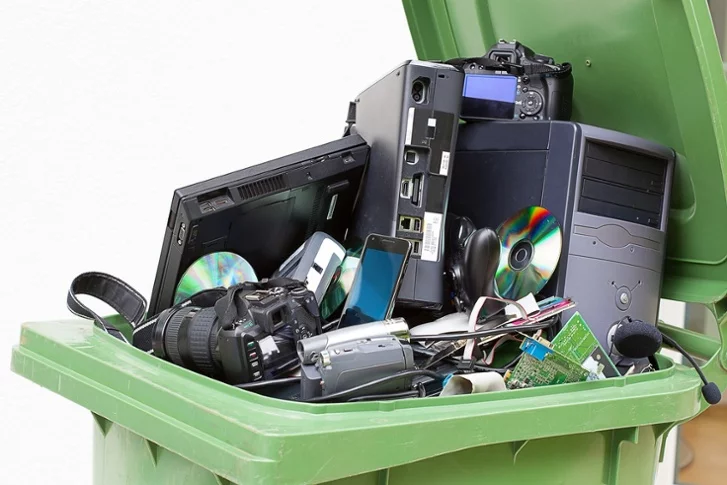Because electronic equipment typically improves and is upgraded almost annually, if not sooner, most of us end up replacing our electronics with new models regularly. This is especially true in many businesses and office and the old devices end up unused, often collecting dust in some basement or office.
All of these old devices and electronic equipment is what is referred to as e-waste, or electronic waste, and they requires special consideration when being disposed of.
If you consider your offices right now, how many printers, computer monitors and old CPUs have been out of commission for over a year now? If you counted a few or more, it’s a good time to get rid of those e-waste items. This brings up the question, however, of what do you do with all of it?
The Disposal of E-Waste is not Simple
Unfortunately, for consumers, there are a number of environmental and legal issues with e-waste disposal. Because of the requirements in place for properly disposing of a computer monitor, for example, the process takes time, effort and money.
According to the CalRecycle website, e-waste disposal and recycling is highly recommended:
Unwanted electronic devices should be reused or recycled. Computers, monitors, televisions and other electronic equipment should NOT be disposed of with regular garbage; in fact, this is illegal in California. Functioning electronics can be sold or donated thereby prolonging their useful life. Nonfunctioning electronics that cannot be repaired should be recycled by an organization qualified to do so.
However, there are options and they are expanding every year.
Business E-Waste Disposal and Electronics Recycling
Because of the many regulations restrictions and added fees involved in recycling e-waste, it may seem that simply throw out your old electronics is the wisest business course. Aside from probably being illegal, it also ignores the bigger problem with e- waste, which is that it contains toxic materials that are hazardous both to the environment and to human health.
The following statistics of United States reveal not only the scope of the problem, but the amount of potentially reusable resources that are being left un-recovered each year:
The United States generated 11.7 million tons of e-waste in 2014. According to EPA, only about 1 million tons of over 3.4 million tons of e-waste generated in the U.S. in 2012 was recycled, resulting in a recycling rate of 29 percent. The e-waste recycling rate in 2011 was 24.9 percent, and 19.6 percent in 2010.
California alone produced 210,790,222 lbs of e-waste in 2012 – over 5 pounds for every California resident.
For every one million cell phones that are recycled, the EPA states that 35,274 lbs of copper, 772 lbs of silver, 75 lbs of gold, and 33 lbs of palladium can be recovered. For those not familiar with palladium, palladium is a precious metal using for making electrical contacts, as well as surgical instruments and parts for watches.
Recycling circuit boards can be more valuable than mining for ore! One ton of circuit boards is estimated to contain 40-800 times more gold than one metric ton of ore. There is 30-40 times more copper in a ton of circuit boards that can be mined from one metric ton of ore.
Based on e-waste disposal rates, Americans throw out phones containing over $60 million in gold and/or silver every year.
In addition to the components and rare metals lost each year, there is an environmental impact, as well. For example, it has been estimated that recycling one million laptops saves the energy equivalent to the electricity used by 3,657 U.S. homes in a year, according to the EPA.


Recent Comments